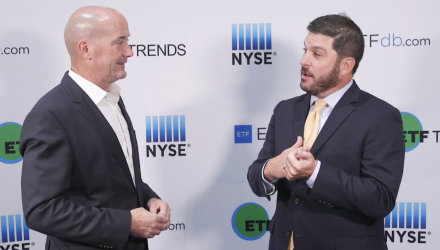Smart beta or factor-based ETFs have been garnering a lot of attention. For example, Goldman Sachs has come out with a line of so-called ActiveBeta strategies to help investors potentially outperform the broader market and limit downside risks.
“Active beta almost sounds like an oxymoron – active and beta, but when you get under the hood a little bit, we’re really excited about what it is. We’re proud of the assets we’ve gathered. And the reality is, what it is is really pretty simple. It’s a multi-factor model where you get some of the benefits of what we would call traditional active management – some of the factors that traditional active managers have used to come up with, kind of how you might generate some alpha. But at the same time, you’ve got some of the pure passive components of tax efficiency, low cost, trade ability, transparency – all the reasons we like ETFs. So, it’s kind of a marriage of active and passive,” Cole Feinberg, Vice President, Exchange Traded Funds Goldman Sachs Asset Management, said at the 2019 Charles Schwab IMPACT conference.
The Goldman Sachs ActiveBeta U.S. Large Cap Equity ETF (NYSEarca: GSLC) was one of the first ETFs introduced by Goldman Sachs. As a multi-factor ETF, part of GSLC’s objective is to provide investors with a broad basket of equities with the potential to top traditional benchmarks, such as the S&P 500, while removing the need to time individual investment factors. The smart beta ETF is also one of the least expensive smart beta ETFs investors can find at just 9 basis points.
GSLC factors include value or how attractively a stock is price relative to fundamentals like book value and free cash flow; momentum or the current up or down trend in a company stock; quality or profitability; and low volatility or the degree of fluctuation in a company’s share price over time. These are some of the factors frequently screened for under an actively managed portfolio.
Cap-weighted indices may expose investors to other fundamental risks as the weighting methodology would attach more weight toward indebted countries or companies. On the other hand, multi-factor benchmarks attempt to avoid such problems. Frequently used factors in multi-factor indexes include, value, growth, quality and low volatility.
Watch the full interview between Tom Lydon and Cole Feinberg:
For more ETF-related commentary from Tom Lydon and other industry experts, visit our video category.
